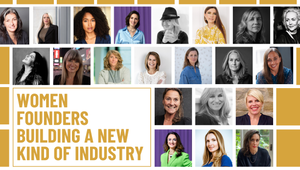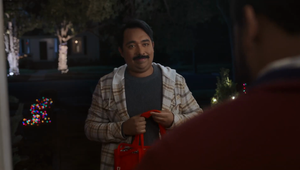
How a Renewed Focus on Creative Leadership Is Shaking up the Brand World

Creativity has become a top priority in the boardroom as businesses look for ways to differentiate from their competitors in an increasingly crowded marketplace.
A staggering 73% of organisations surveyed in the World Economic Forum's Future of Jobs Survey this year cited creative thinking skills as a key consideration when recruiting talent. This is on the back of mounting research showing the most creative companies achieve better business results.
Creative thinking is uniquely suited to solving complex challenges; something data and analytics alone can’t do. And as disruption becomes constant and the economic climate increasingly unpredictable, companies need executives who can approach problems creatively and inspire bold, innovative responses.
Creative skills have become so highly valued that we’re seeing businesses across sectors giving senior creative talent a bigger seat at the leadership table.
The traditional remit of a chief creative officer (CCO) was limited to overseeing brand expression, advertising, and design. But as creativity has become more central to business strategy, impacting product development, customer experience and content ecosystems, this role has expanded. There’s now a growing cohort of CCOs at the helm of some of the world’s biggest brands, including H&M, Tiffany & Co, Oatly and Capital One.
The trend has seen some organisations combining responsibilities traditionally led by the CMO role - such as shaping how brand identity is developed and building relationships with key stakeholders - into a broader CCO remit. This is happening particularly in industries where brand identity and storytelling are core to differentiation, such as fashion, media and tech. Other companies are following a hybrid leadership model, where CMOs and CCOs operate as strategic partners.
This doesn’t mean the CMO is under threat of extinction. Instead, the role is evolving to require both analytical fluency and creative leadership. Data, performance marketing, and personalisation still dominate much of the CMO’s world. But the most successful CMOs are those who can blend creative vision with measurable outcomes. The CMO will need to act as a strategic leader and creative enabler, embedding creativity in the business.
Here’s how the new wave of creative leadership is impacting businesses and brands:
Creative leadership roles will continue to expand
Increasingly, businesses will be seeking ‘full-stack creatives’ - leaders who are as comfortable talking EBITDA with the CFO as they are reviewing storyboards with creators.
Creatives aspiring to become creative leaders must speak the language of business and be able to build and lead cross-functional teams.
As CCOs will be increasingly working at the same level as, or in partnership with, CMOs, CTOs, and CPOs, expect their influence to expand even further across the organisation, to employee experience and innovation strategy.
In-house creative teams will evolve into strategic partners
In-house creative teams have undergone a seismic shift in recent years. Once considered mere internal production resource, they now operate as brand stewards and strategic partners. Many top brands, from Google to Nike, have built in-house agencies with external-calibre talent to rival the best global creative shops.
Expect the evolution of in-house teams to accelerate in the coming years. Under creative leaders, in-house teams will be embedded earlier in the strategic process, working closely with product and growth teams. We’ll also see an influx of talent from elite creative agencies.
Organisational shift towards integrated teams
As creativity moves higher up the agenda, organisations are increasingly shifting away from siloed teams focused on a single channel (such as social media or ecommerce) to fully integrated teams where strategists, creatives, data analysts and product developers share single P&Ls and all work to the same goal: meeting consumer needs. This will help to align business functions and encourage the entire organisation to think differently.
Creativity is no longer just a department, it’s an operating principle
Rather than being the sole responsibility of marketing or design teams, creativity will be increasingly recognised as a critical driver of innovation, problem-solving and business impact in measurable ways. By embedding creativity into the core of business operations, organisations will become more adaptable, more collaborative, and better equipped to navigate the complexities of today’s rapidly changing environment.
MikeTeevee’s role as a scalable production partner is to act as an accelerator for in-house teams - removing bottlenecks, providing scalable creative, and executional expertise - all while championing the brand’s own ideas. As a strategic partner that can bridge the gap between vision and reality, our expertise in craft, technology, flexibility and speed is perfectly aligned with the needs of in-house Creative Leaders who are navigating increasingly complex ecosystems.
As AI continues to drive efficiency, we’ll be able to spend less time on the mundane aspects of operating a business and more time solving complex problems - making human creativity more valuable than ever.
The companies that win the next decade won’t be the ones with the most data, the biggest media spend, or even the strongest tech ecosystem. They’ll be the ones who know how to turn creativity into commercial power to build cultures where ideas are born, nurtured, and brought to market with precision and passion.















